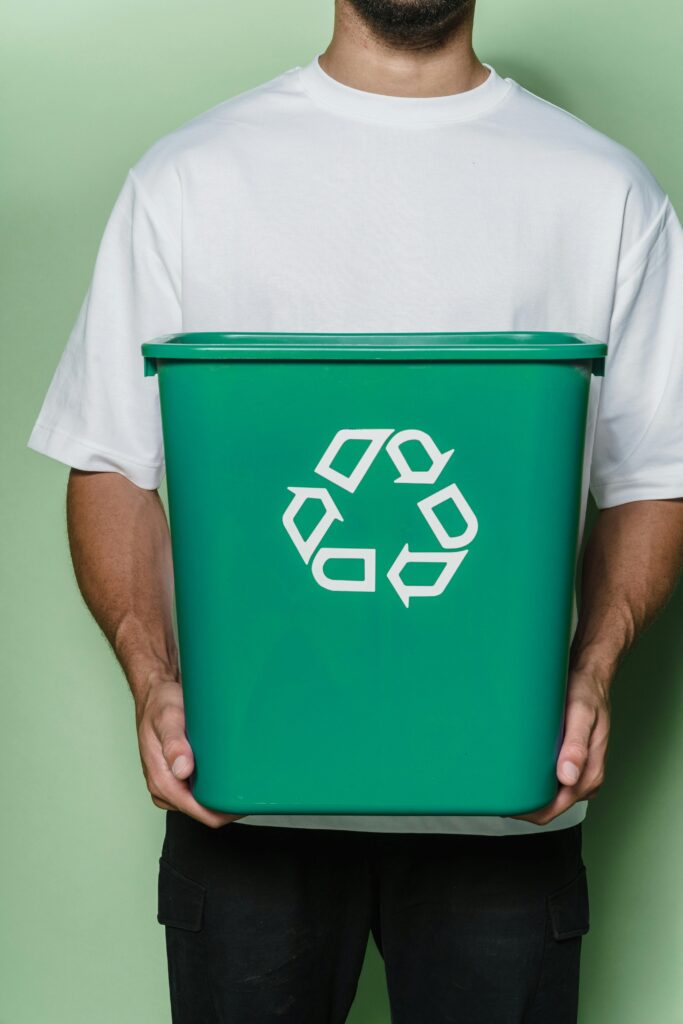Inevitably, when moving, there will be items that you can’t bring with you—pieces of furniture, random knickknacks and those spices that have been sitting at the back of your pantry for years.
Moving Americans throw out an estimated 8.4 million tons of unwanted stuff every year. If you look at furniture specifically, over 10 million tons of furniture waste ends up in Canadian and American landfills every year.
When I moved from Halifax to Toronto, I couldn’t bring everything with me. I was determined not to abandon any of my possessions, though—I’d seen all the discarded items by the curb at moving time and didn’t want to contribute to that.
I did an inventory of all the items that I needed to get rid of and made a plan for how to do so responsibly, whether by giving them to a friend, selling or donating. Then I found a home for each item in the weeks leading up to my move.
Of course, not everyone has that much time and motivation, but you can still take steps to get rid of some of your things responsibly when moving.
The benefits of responsible disposal include reducing the waste that goes to landfill, ensuring that items get more use before their end of life, and reducing greenhouse gas emissions and expenses on moving day due to moving fewer items.
How to get rid of items sustainably when moving
There are four main options for getting rid of items when moving: selling, giving items away for free, donating and doing responsible disposal.
Sell your items
The benefit of selling items is that you’ll get back some of the money that you spent on them, helping cover moving expenses. Selling is best saved for items that are in relatively good condition. This works for big items like furniture, but also for smaller things like lamps and toasters.
If you have enough things to sell, you could consider organizing a garage sale (see some tips in this article). Try to do this several weeks before you move so you can make a plan to deal with any items that aren’t sold.
Alternatively, you can sell items online. For run-of-the-mill items, Kijiji, Craigslist, Facebook Marketplace, and local buy and sell Facebook groups are good options. You can also try eBay or Poshmark for higher-quality items. When posting an item online, make sure to include details in the description, like its size, features and condition.
Give items away for free

For items that you don’t think people would spend money on—or that you’re desperate to get rid of—giving away for free is another good option. Try asking around: it’s possible one of your friends or family members is looking for that thing you’re trying to get rid of.
There are also organized ways to give things away for free and contribute to the gift economy.
The Freecycle Network is a network of people giving and getting stuff for free in their towns. The Buy Nothing Project has a similar concept, with an app that connects you with others in your community to give and request items. There are also Facebook groups dedicated to free stuff.
The benefit of these types of groups is that you can also use them later when you’re equipping your new home.
If nothing else, you can leave items with a “Free” sign out at the curb or in the laundry room of your building. However, try to do this outside of popular moving times to avoid getting lost in the fray, and resign yourself to the fact that it’s possible no one will take your item.
Donate your items
You could also consider donating items that are in decent condition so that other people can also benefit from them. Secondhand and thrift stores like Value Village, Habitat for Humanity ReStore, Salvation Army Thrift Store and Goodwill will accept different kinds of items, including (potentially) furniture, dishes, clothing and small appliances. Be sure to check the guidelines of the specific store. Another option specifically for furniture is Furniture Bank, which accepts free drop-offs of furniture (or will pick items up for a fee), then gives the furniture to families in need.
Keep in mind that thrift stores are often overwhelmed with donations. There may be an organization that will happily take niche items off your hands, like a library or art centre. Food banks will often accept unopened, non-perishable food. View a map of non-profit organizations in Toronto accepting various kinds of donations here, and a list of community organizations accepting donations for refugees here.
If you’re in school, some universities and colleges also run free stores, where students can donate and pick up gently used household items and school supplies—all for free.
Dispose of items responsibly

If there are no opportunities to sell, give away or donate an item, make sure to dispose of it correctly, whether that’s in the recycling, garbage or a different waste stream. Check out the City of Toronto’s Waste Wizard to find out how to get rid of different items. Be particularly careful about hazardous waste and electronic waste.
When it comes to oversized items like furniture, the city will pick up items set out on garbage day (check out the guidelines here). You could also consider using a junk removal service if you have a lot of bulky items, but keep in mind there’s a fee for this. Make sure as well that the company disposes of the “junk” in a responsible way since some just bring the items to a landfill!
If you have an unusual item that you’re not sure how to get rid of, there are a few resources you can check out. Bluedot Living Toronto has a guide to getting rid of (almost) anything in Toronto. Earth911 maintains a database of how to recycle many items in North America. And TerraCycle recycles many items that are otherwise impossible to recycle.
Sustainable moving tips: Disposing of items
There are a lot of things on your mind when moving, and sustainability may not be top on the list. But finding a new home for items that you can’t bring with you helps with peace of mind through reducing clutter and waste. By selling, giving away, donating and responsibly disposing of items, you can tick one thing off your sustainable moving checklist.
I want to know: How do you get rid of items responsibly when moving?
Check out the second post in this series, which shares sustainability tips for the moving process.
Categories and tags:
Share this post:

